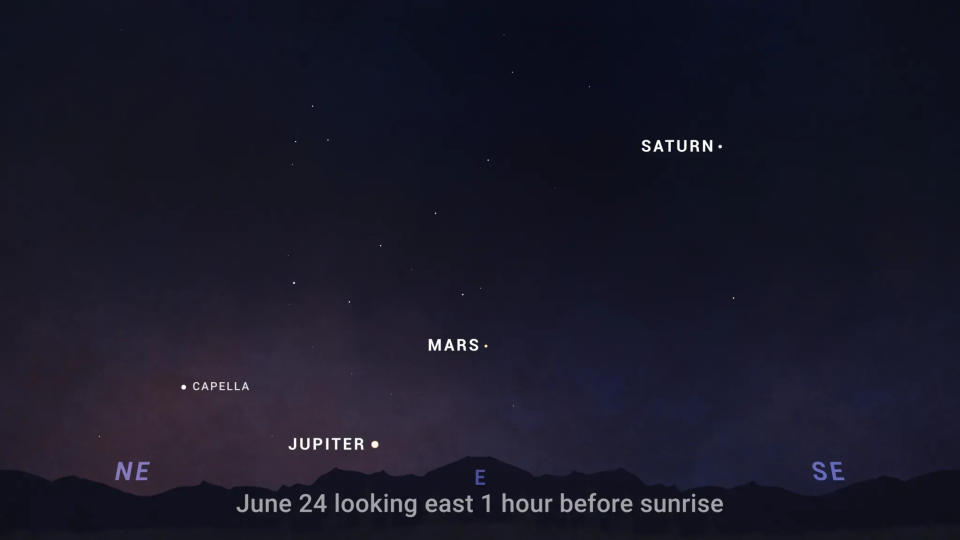Another planet parade is coming, and you might be able to see this one
There's good news for those of you who missed the alignment of six planets earlier this month (don't worry, you didn't miss much). Another "planetary parade" happens again soon, and this one, according to NASA, should be much easier to spot. Here's what we know.
Is there another 'planet parade' happening in June 2024?
Yes, according to skywatching tips from NASA, a planetary alignment will happen June 29, 2024, consisting of Earth's moon and three planets: Jupiter, Mars and Saturn. An image provided by the space agency shows what skywatchers can expect from around June 24th onward.
"If you're patient and you wait until the end of the month, these planets will move farther away from the sun higher up in the early morning sky," said Andrew Fazekas, communications manager for Astronomers Without Borders to USA TODAY in an earlier article.

When will the planets align next?
If you're hoping for a big celestial show, six planets — Mercury, Mars, Jupiter, Uranus, Neptune and Saturn — will form a diagonal line August 28, 2024, Star Walk says. You don't need to wait that long to catch the next planetary alignment, however. Four heavenly bodies are aligning in late June.
What equipment do you need to view a planetary parade?
While some planets like Mars, Jupiter and Saturn are easier to spot with the naked eye, it never hurts to take binoculars or a good, sturdy telescope. That's especially true if you want to view planets further away, like Neptune.
"Neptune is a planet that you need strong binoculars or a small telescope to be able to see," Fazekas told USA TODAY. "And it's not easy to find either."
Folks who go out to stargaze on June 28 will be able to see Neptune right next to the moon. On June 29, it will be farther away from the moon, and be above it instead.
Others are reading: Strawberry moon coming on the heels of the longest day of the year. Here's when to look up
How to watch the next planetary parade
According to Fazekas, people will need to do the following to get a view of the planetary parade:
Get up early before sunrise.
Find a spot with a clear view that faces the east about an hour before sunrise.
Have your binoculars or telescope ready to view planets that aren't visible to the naked eye.
Apps, like Skyview on the Apple app store, can turn people's phones into a tool that helps them identify celestial bodies in the night sky.
Astronomical events happening in June 2024
Skywatchers, according to NASA, should keep the following dates in mind for June 2024.
◾ June 3: The crescent Moon sits beneath Mars in morning twilight. Look for them low in the eastern sky.
◾ June 6: New moon.
◾ June 21: Full moon.
◾ June 24: Jupiter is now visible low in the east before sunrise. Look for the bright planet around 10 degrees above the horizon this final week of June, forming a line with Mars and Saturn that stretches toward the south.
◾ June 27: Look for the Moon rising in the east with Saturn around midnight. By dawn this morning, you'll find them high in the southern sky. They appear super close together – close enough to appear in the same field of view through binoculars.
Others are reading: Here's when every full moon shines in 2024
John Tufts covers trending news for the Indianapolis Star. Send him a news tip at JTufts@Gannett.com.
This article originally appeared on Indianapolis Star: June 29 planet parade: Here's how to see Mars, Jupiter and Saturn align

